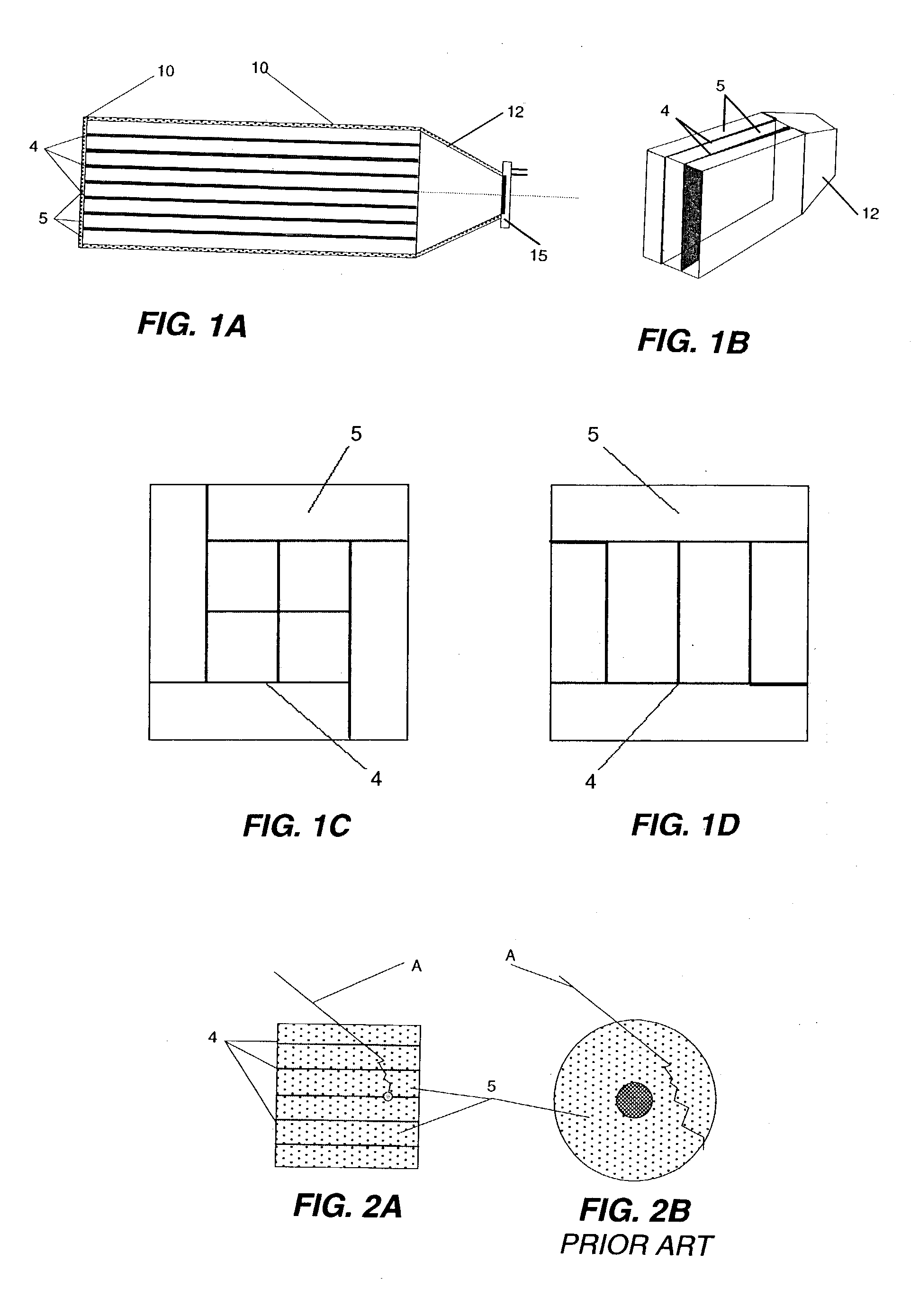Neutron detector with layered thermal-neutron scintillator and dual function light guide and thermalizing media
a neutron detector and scintillator technology, applied in the field of neutron detection, can solve the problems of occupying a large amount of precious space in a small instrument, reducing the sensitivity to the more energetic portion of the neutron distribution, and requiring a several-kilovolt power supply, so as to reduce the velocity of incoming fission neutrons, and reduce the cost of operation
- Summary
- Abstract
- Description
- Claims
- Application Information
AI Technical Summary
Benefits of technology
Problems solved by technology
Method used
Image
Examples
Embodiment Construction
[0014] The neutron detector of the present invention can be used in a variety of applications, such as pass-through portal detectors, e.g., devices in which a person or object is passed through a relatively large and usually stationary device. In addition, the compact nature of the neutron detector advantageously permits its use in smaller detectors, particularly handheld devices, e.g., portable devices of such dimensions that may enable an operator to handle the device without the need of mechanical assistance.
[0015] Thermal neutron sensitive scintillator films useful in the neutron detector include 6Li—ZnS, 10BN, and other thin layers of materials that release high energy He or H particles in neutron capture reactions. In general, the scintillating film has a high concentration of an element having a high probability of thermal neutron absorption with the subsequent emission of an energetic alpha, proton or triton with several MeV of energy. Also, the scintillating film should pr...
PUM
 Login to View More
Login to View More Abstract
Description
Claims
Application Information
 Login to View More
Login to View More - R&D
- Intellectual Property
- Life Sciences
- Materials
- Tech Scout
- Unparalleled Data Quality
- Higher Quality Content
- 60% Fewer Hallucinations
Browse by: Latest US Patents, China's latest patents, Technical Efficacy Thesaurus, Application Domain, Technology Topic, Popular Technical Reports.
© 2025 PatSnap. All rights reserved.Legal|Privacy policy|Modern Slavery Act Transparency Statement|Sitemap|About US| Contact US: help@patsnap.com



